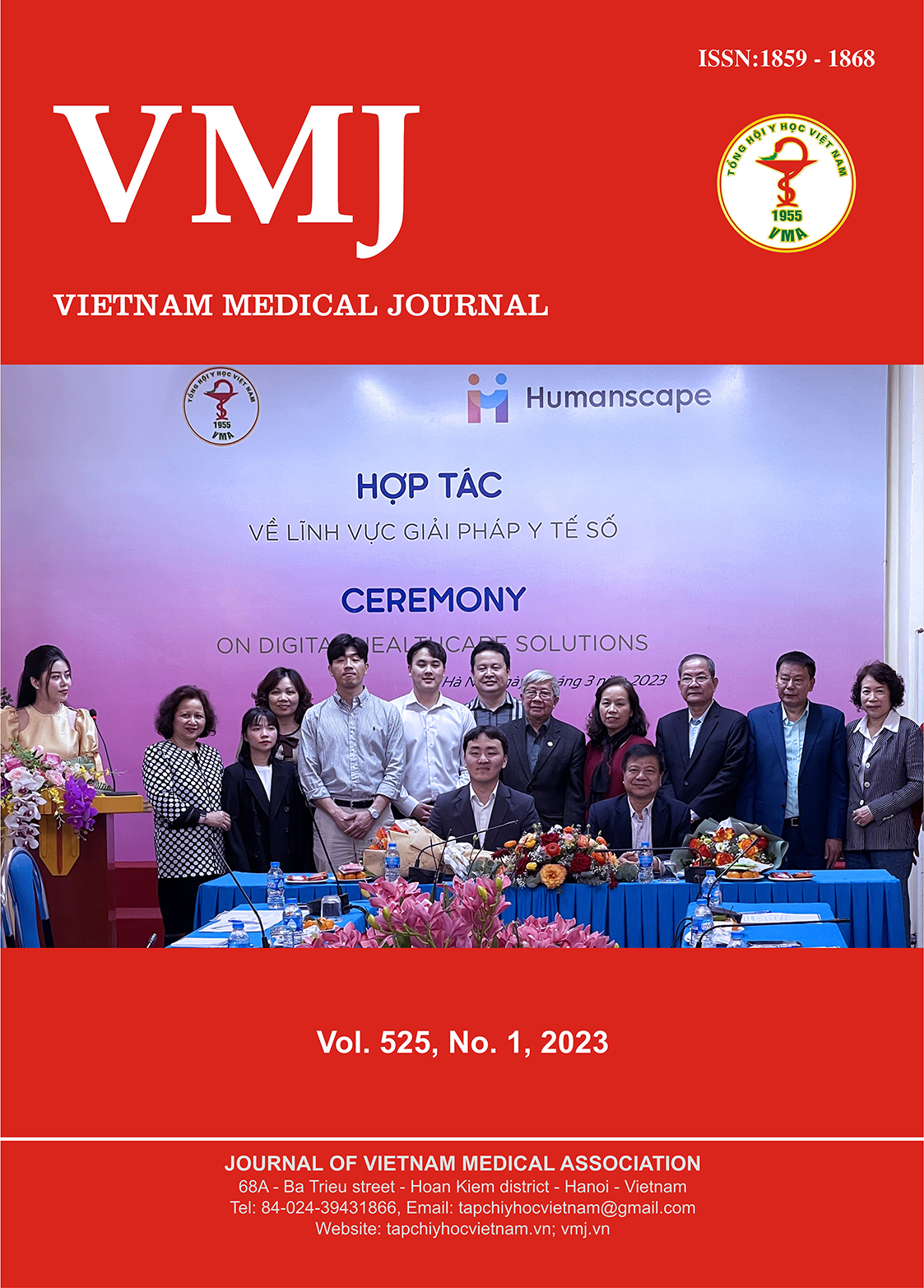ANALYSIS OF ROOT CANAL CHARACTERISTICS OF MAXILLARY INCISORS WITH CONE BEAM COMPUTED TOMOGRAPHY
Nội dung chính của bài viết
Tóm tắt
Pulpitis is a common oral disease that greatly affects the health as well as the quality of life of patients. Which if left untreated or poorly treated can lead to inflammation of apical tissues [3]. Root canal treatment (endodontic treatment) aimed at eliminating bacteria, preserving and restoring mechanical function of teeth. Root canal treatment takes time, instrument and depends on doctor's skills and clinical experience. It is clear that the additional information provided by CBCT may increase and/or improve diagnostic accuracy and confidence in decision-making as well as have an impact of treatment planning. More clinical studies are required to assess the long-term impact of CBCT on the outcomes of endodontic treatment [10]. In Vietnam, cone beam computed tomography (CBCT) is a new technology in the field of endodontics with multiple advantageous features such as establishing 3D images of the root canal system with a low dose of X rays, providing more information, true spatial relationships, and image data can be sectioned. Hence, CBCT is highly beneficial and has high value in the field of endodontics, especially in cases of teeth with complex root canal systems. With the desire to apply science and technology into clinical pratice, we carry out this study: "Analysis of root canal characteristics of maxillary incisors with cone beam computed tomography” with the 2 aims:
- To evaluate the number of root canals in maxillary incisors.
- To analyze curvature and morphology of the root canal system in maxillary incisors.
Chi tiết bài viết
Tài liệu tham khảo
2. Calvert G. (2014), "Maxillary central incisor with type V canal morphology: case report and literature review", J Endod, 40(10), pp. 1684-7.
3. Huong Dang Thi Lien (2012), "Proportion of mesiodistal curvature in root canals having endodontic treatment at Faculty of Odonto-stomatology in Bach Mai hospital", Military medicine magazine, 3, pp. 1-7.
4. Lieu Le Quan (2018), “Clinical, radiographic characteristics and outcomes of endodontic treatments of permanent incisors with Protaper hand instrument system”, Master thesis, Can Tho University of Medicine and Pharmacy.
5. Martins J. N. R., Gu Y., Marques D., Francisco H., Carames J. (2018), "Differences on the Root and Root Canal Morphologies between Asian and White Ethnic Groups Analyzed by Cone-beam Computed Tomography", J Endod, 44(7), pp. 1096-1104.
6. Mousavi S. A., Farhad A., Shahnaseri S., Basiri A., Kolahdouzan E. (2018), "Comparative evaluation of apical constriction position in incisor and molar teeth: An in vitro study", Eur J Dent, 12(2), pp. 237- 241.
7. Ngan Duong Hoang, VanĐinh Thi Khanh, Khoa Pham Van (2013), "Determine the position of apical foramen on maxillary lateral incisors", Ho Chi Minh city medical magazine, 17(2), pp. 202-206.
8. Nosrat A., Schneider S. C. (2015), "Endodontic Management of a Maxillary Lateral Incisor with 4 Root Canals and a Dens Invaginatus Tract", J Endod, 41(7), pp. 1167-71.
9. Park P. S., Kim K. D., Perinpanayagam H., Lee J. K., Chang S. W., Chung S. H., Kaufman B., Zhu Q., Safavi K. E., Kum K. Y. (2013), "Three-dimensional analysis of root canal curvature and direction of maxillary lateral incisors by using cone-beam computed tomography", J Endod, 39(9), pp. 1124-9.
10. Patel S, Brown J, Pimentel T, Kelly RD, Abella F, Durack C. (2019), “Cone beam computed tomography inEndodontics-a review of the literature”, International Endodontic Journal, 52, pp.1138-1152.


